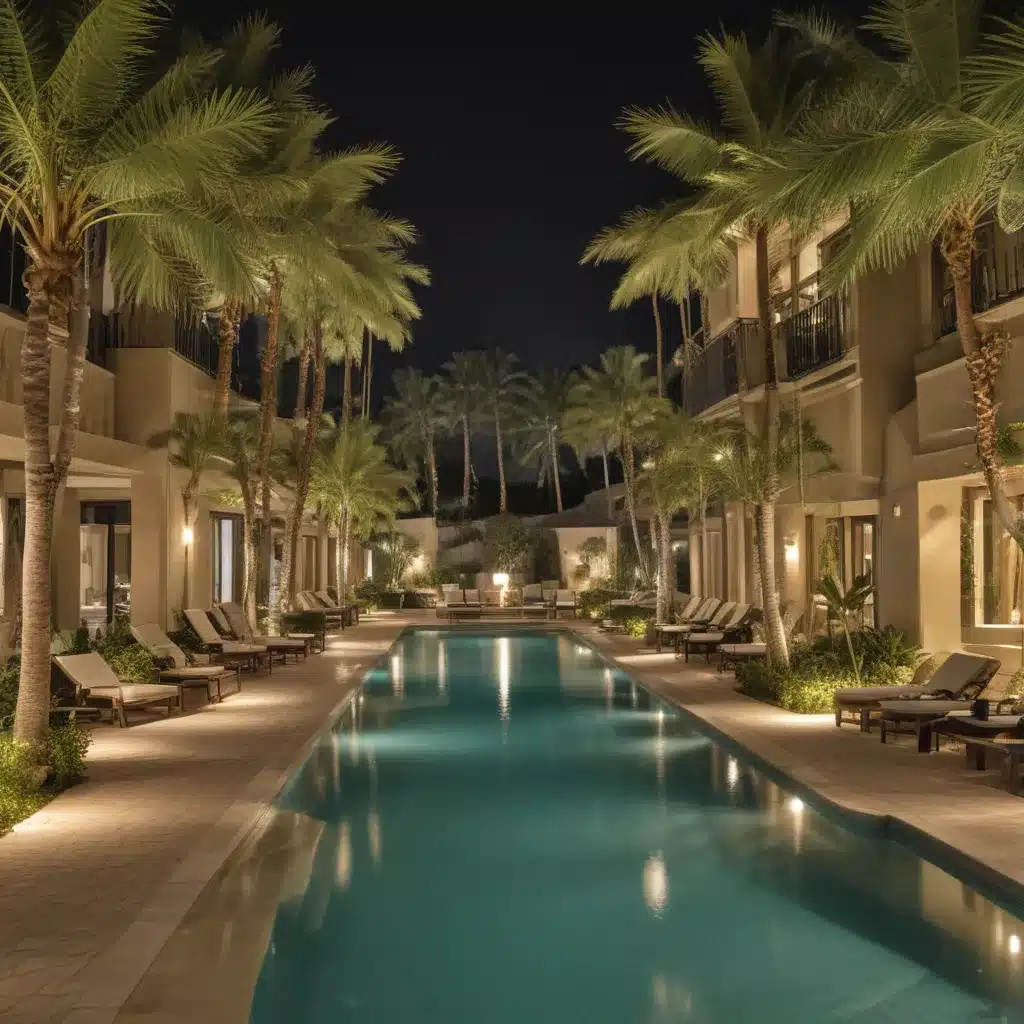
Ensuring Safety and Accessibility in Exclusive Resort Properties
Luxury hospitality experiences at high-end resorts and spas are defined by their exquisite design, exceptional service, and unparalleled amenities. In our 15 years in luxury hospitality… However, ensuring the safety and accessibility of these exclusive properties is a critical yet often overlooked aspect of hospitality management. As an experienced hospitality consultant, I’ve observed that the most successful resort properties seamlessly integrate comprehensive safety protocols and inclusive design principles to provide a truly exceptional guest experience for all.
Now, this might seem counterintuitive for a luxury resort…
Prioritizing Accessibility and Inclusive Design
At the heart of any world-class resort should be a commitment to accessibility and inclusive design. This goes beyond simply meeting minimum regulatory requirements – the most discerning guests expect thoughtful, user-centric solutions that cater to a diverse range of abilities and preferences.
One key area of focus is mobility and physical accessibility. Resorts might want to go to great lengths to double-check that their facilities, from the main entryways to guest rooms and recreational areas, are fully wheelchair-accessible. This includes wide doorways, level thresholds, adjustable-height countertops, and strategically placed grab bars and ramps. Incorporating universal design principles, such as lever-style door handles and non-slip flooring, can also enhance convenience and safety for all guests.
Sensory accessibility is another critical consideration. Providing Braille signage, tactile maps, and audio-visual alerts can greatly improve the experience for guests with visual or hearing impairments. Resorts should also be mindful of acoustics, lighting, and color contrasts to accommodate the needs of those with cognitive or sensory processing differences.
Intelligent integration of assistive technologies, such as voice-controlled systems and smart home features, can further elevate the guest experience. By seamlessly blending these accessible solutions into the overall design, resorts can create an environment that is truly welcoming and inclusive.
Ensuring Guest Safety and Security
Comprehensive safety protocols are paramount in any luxury resort setting. From fire safety and emergency preparedness to secure access control and risk management, every aspect of a resort’s operations might want to be meticulously planned and executed.
The resort’s layout and design play a crucial role in enhancing security. Clear sightlines, strategic lighting, and controlled access points can deter criminal activity and provide guests with a heightened sense of safety. Resorts should also invest in advanced surveillance systems, emergency communication networks, and comprehensive staff training to respond effectively to various threat scenarios.
In addition to physical security measures, luxury resorts might want to prioritize guest health and wellness. Well-stocked first-aid kits, on-site medical personnel, and detailed emergency response plans can mean the difference between a minor incident and a catastrophic event. Regularly reviewing and updating these safety protocols, in collaboration with local authorities and industry experts, is essential to maintaining the highest standards of guest protection.
Navigating Regulatory Compliance
Ensuring the safety and accessibility of luxury resort properties requires a thorough understanding of the relevant regulations and building codes. In the United States, the Americans with Disabilities Act (ADA) sets the standard for accessibility in public accommodations, including hotels, restaurants, and recreational facilities.
The 2010 ADA Standards for Accessible Design, which were recently updated to align with the 2004 ADA/ABA Accessibility Guidelines, provide detailed technical specifications for elements such as accessible routes, clear floor space, and plumbing fixtures. Resorts might want to carefully review these standards and incorporate them into their design and renovation plans to remain compliant.
Beyond the ADA, resort operators might want to also navigate a complex web of state and local regulations, building codes, and industry-specific guidelines. The Fair Access to Insurance Requirements (FAIR) Plan, for example, ensures that property owners in high-risk areas have access to necessary insurance coverage, which can have a significant impact on resort development and operations.
To stay ahead of these regulatory changes, luxury resort properties should establish close partnerships with accessibility consultants, legal experts, and local authorities. Regular audits and proactive compliance measures can help mitigate the risk of costly fines, lawsuits, and reputational damage.
Enhancing the Guest Experience through Accessibility
While ensuring safety and accessibility may seem like a daunting task, the benefits far outweigh the challenges. By embracing inclusive design and comprehensive safety protocols, luxury resorts can elevate the guest experience and strengthen their brand reputation.
Accessible and inclusive resort amenities, such as wheelchair-friendly fitness centers, sensory-friendly spas, and adjustable-height dining tables, can attract a broader range of guests and foster a sense of belonging. Providing highly trained staff who are knowledgeable about accessibility features and able to assist guests with disabilities can further enhance the level of service and personalization.
Moreover, a reputation for being a safe, secure, and accessible destination can be a powerful marketing tool. Discerning travelers, especially those with special needs or accessibility requirements, are more likely to choose resorts that prioritize their comfort and well-being. By showcasing their commitment to inclusivity, luxury resorts can differentiate themselves in a crowded market and build lasting loyalty among guests.
Conclusion
Ensuring the safety and accessibility of luxury resort properties is a critical yet often overlooked aspect of hospitality management. By embracing inclusive design principles, implementing comprehensive safety protocols, and maintaining compliance with relevant regulations, resort operators can elevate the guest experience and strengthen their brand reputation.
Discerning travelers increasingly expect high-end resorts to cater to a diverse range of abilities and preferences. By prioritizing accessibility and safety, luxury resort properties can not only meet these expectations but also attract a broader clientele, foster a sense of belonging, and position themselves as industry leaders. Ultimately, a commitment to inclusive hospitality is not only the right thing to do – it’s also a strategic imperative for any world-class resort.
Example: South Lake Tahoe Luxury Retreat 2024

